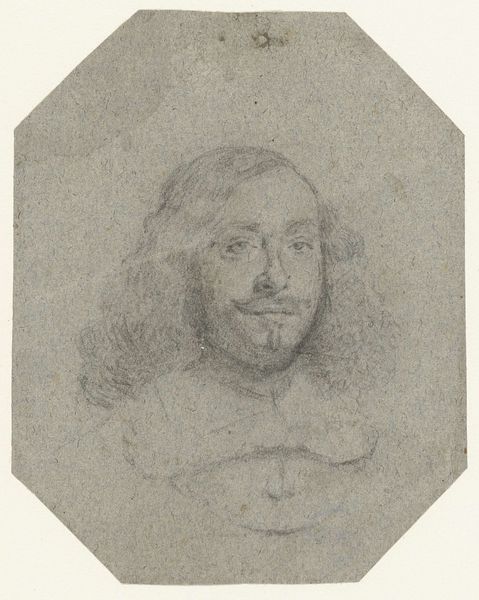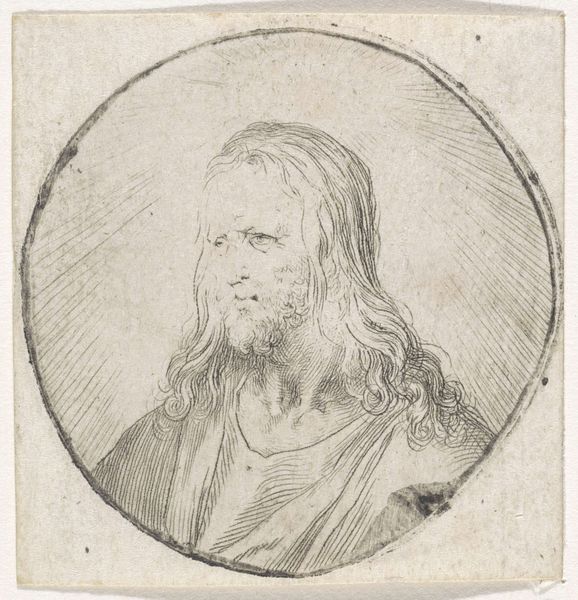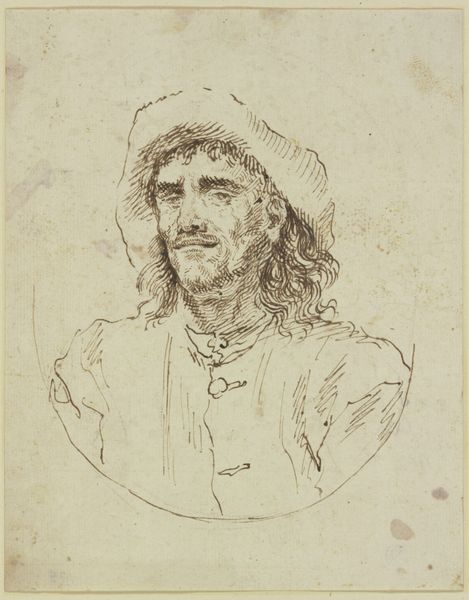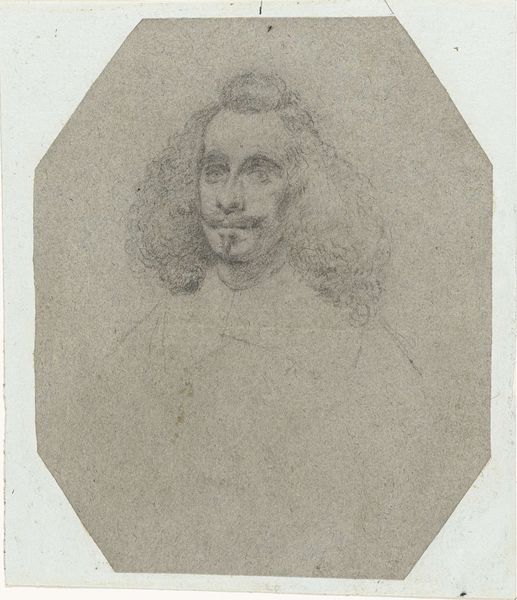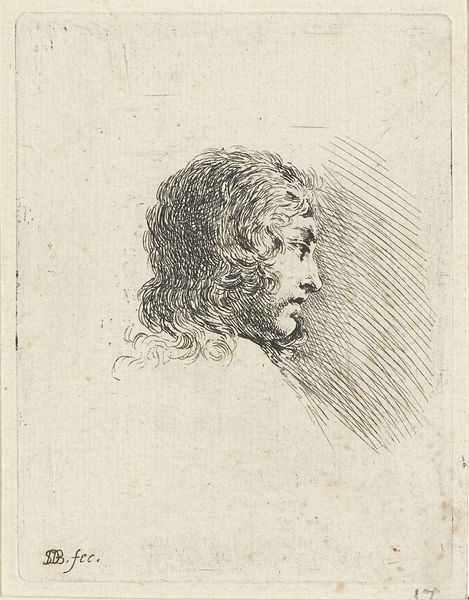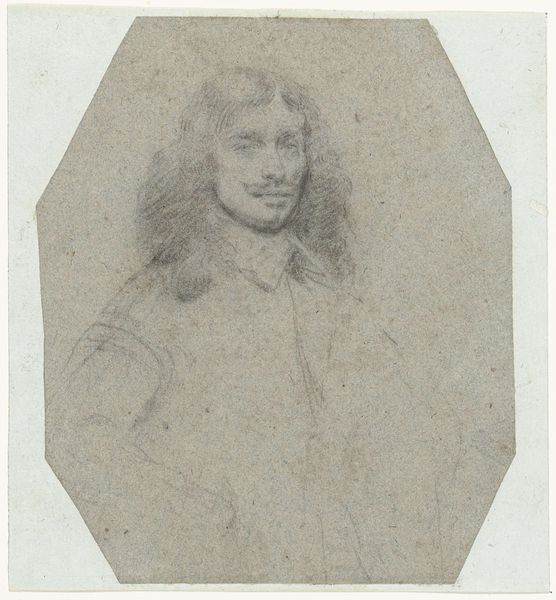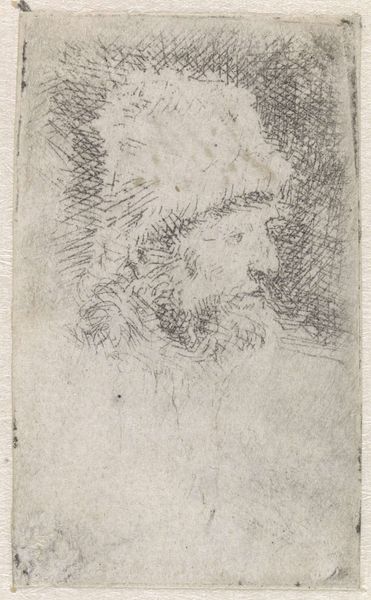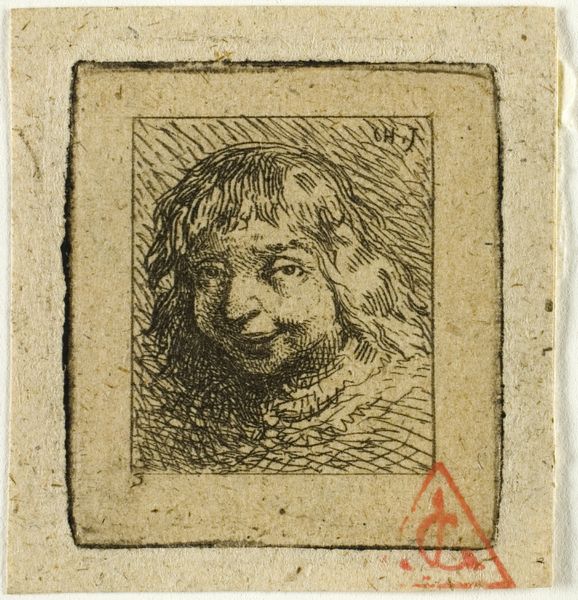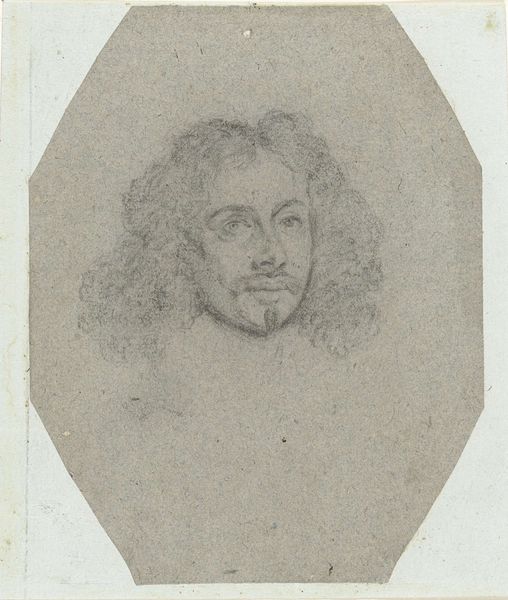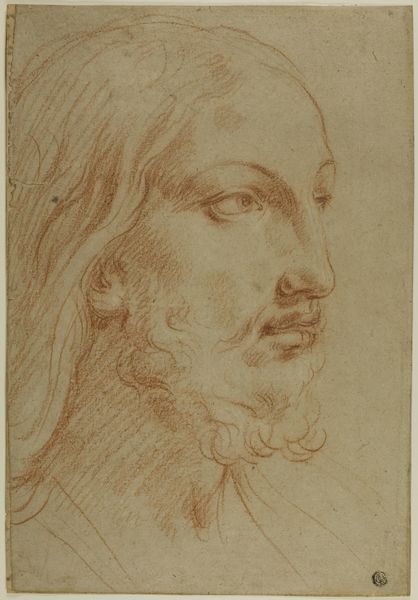
drawing, pencil
#
portrait
#
drawing
#
baroque
#
figuration
#
pencil drawing
#
pencil
Dimensions: height 110 mm, width 113 mm
Copyright: Rijks Museum: Open Domain
Curator: We're looking at a drawing by Gerard ter Borch II from before 1649. The Rijksmuseum holds this small "Portetbuste van een (Spaanse?) heer, naar links"— Portrait of a (Spanish?) gentleman, facing left—rendered in pencil. What's your initial reaction? Editor: An immediate impression of contemplative seriousness, a man perhaps weighed down by responsibility. The almost ethereal quality of the pencil lines, combined with the unknown sitter’s guarded gaze, creates a sense of restrained emotion. Curator: Absolutely. This falls right into Ter Borch's wheelhouse; it seems he favored depictions of dignified individuals in moments of quiet introspection. Think about the larger social and political stage in the Netherlands at this point— a nascent republic still grappling with its identity amidst European power plays, Spain very much still in the mix. I think this could give some insight to this sitter’s presumed identity and Ter Borch’s choice of subject. Editor: The meticulous detailing around the man's moustache and flowing locks certainly underscores an awareness of social performance and perhaps of the sitter wanting to demonstrate his class. It echoes, of course, similar artistic and social trends observable across much of Europe in the baroque period. I also wonder what the implications are of including that question mark on the title description… how does it affect the symbolical reading when not sure of someone’s origins? Curator: Precisely. That 'Spanish?' casts a fascinating shadow, doesn't it? We know from his larger body of work that Ter Borch operated within elite circles. Was he subtly signaling tensions, affiliations, or some form of ambiguous cultural identity in the Netherlands? How would he address colonialist issues later in life? Editor: It’s incredible to see how such understated choices of detail carry so much socio-cultural weight. This artwork creates such intimacy between the spectator and the gentleman portrayed. And this feeling becomes further heightened given the artwork's monochrome pencil rendering. The symbol-oriented Baroque was adept at transmitting so much about social power. Curator: Yes, that's something Ter Borch does remarkably well here— the ability to turn a quick portrait study into something so densely packed with social, cultural, and even psychological suggestion. Editor: It does make you consider how identities – both then and now – are assembled and performed. Curator: It's a piece that encourages continued contemplation.
Comments
No comments
Be the first to comment and join the conversation on the ultimate creative platform.
